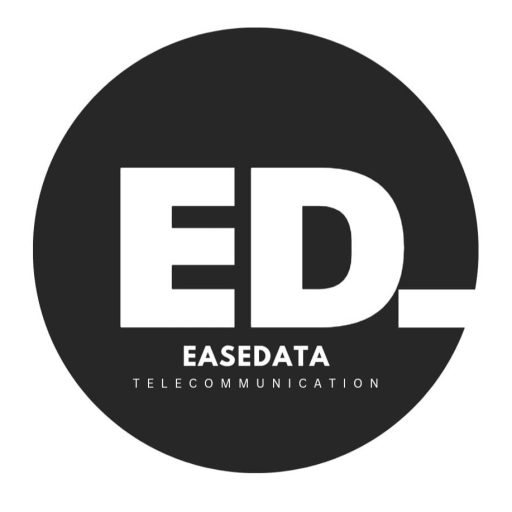10 Essential Data Management Tips for a More Organized Life
Master Your Digital Chaos: Practical Tips for Simplifying and Securing Your Data

In our digital-first world, managing data is no longer an optional skill, it’s a necessity. Whether you’re juggling work files, personal photos, or financial documents, a chaotic approach can lead to frustration and wasted time. Ever found yourself asking, “Where did I save that file?” or “Do I have a backup of this important document?” You’re not alone. The good news is, with a few practical strategies, you can transform your data management habits and reclaim control over your digital life.
Let’s dive into 10 essential tips that will help you stay organized, save time, and reduce stress.
1. Understand the Importance of Data Categorization
Data categorization is the foundation of effective data management. Think of it like organizing your home: every item needs a designated place, and your files are no different.
- Actionable Steps:
- Create master folders for major areas like “Work,” “Personal,” and “Projects.”
- Within these folders, use subfolders for specific topics or categories, such as “Invoices,” “Photos,” or “Client Work.”
- For emails, use filters to automatically sort incoming messages into labeled folders.
- Real-Life Example: A freelancer managing multiple clients can create a folder for each client, with subfolders for contracts, invoices, and deliverables. This way, everything is easy to locate at a moment’s notice.
2. Utilize Cloud Storage Solutions
Cloud storage has revolutionized how we handle data. It provides accessibility, security, and peace of mind, ensuring your files are safe even if your device isn’t.
- Popular Options:
- Google Drive: Great for collaboration and integration with other Google tools.
- Dropbox: Perfect for file sharing and syncing across devices.
- iCloud: Ideal for Apple users with seamless device integration.
- Pro Tip: Organize your cloud storage just as you would your local files. Avoid dumping everything into a single folder it defeats the purpose of being organized.
- Why This Matters: Cloud storage allows you to access important files anywhere. Whether you’re traveling or switching devices, your data is always at your fingertips.
3. Regular Backups Are Non-Negotiable
How often do you back up your files? If your answer is “rarely” or “never,” it’s time to change that. Backups are your insurance policy against unexpected data loss.
- How to Back Up Effectively:
- Use external drives for local backups. A 1TB or 2TB portable hard drive is affordable and reliable.
- Automate cloud backups with services like Google One or OneDrive.
- Ensure you back up your mobile data, including contacts, photos, and app settings.
- The 3-2-1 Backup Rule: Keep three copies of your data two on different types of media (e.g., external drive and cloud) and one offsite for extra safety.
4. Declutter Regularly
Data clutter is the digital equivalent of a messy room. It slows down your devices, makes finding files harder, and creates unnecessary stress.
- Practical Decluttering Tips:
- Schedule a monthly “data cleanup day.”
- Delete files you no longer need, such as duplicate photos or old drafts.
- Empty your Downloads folder and clear your browser cache regularly.
- Tools to Help:
- CCleaner: For cleaning unnecessary files and improving system performance.
- Duplicate File Finder: For identifying and removing duplicate files.
5. Use Password Management Tools
With the increasing number of online accounts, password management can quickly become overwhelming. Writing them down or reusing the same password is a recipe for disaster.
- Top Password Managers:
- LastPass: Secure and user-friendly.
- Dashlane: Includes additional security tools.
- 1Password: Great for families or teams.
- Pro Tip: Use two-factor authentication (2FA) wherever possible for an extra layer of security.
- Metaphor: A password manager is like a Swiss Army knife, it simplifies your life by consolidating all the tools you need in one place.
6. Optimize Your Workflow with Automation
Automation is the secret weapon of data management. It reduces manual effort, minimizes errors, and frees up time for more meaningful tasks.
- Ideas for Automation:
- Set up rules in your email to sort messages into folders based on keywords or sender.
- Use apps like IFTTT or Zapier to connect tools and automate repetitive tasks.
- Enable auto-save features in tools like Microsoft Word or Google Docs.
- Real-Life Example: A busy entrepreneur can automate recurring invoices to save time and ensure timely billing.
7. Leverage Data Visualization
Raw data can be overwhelming and hard to interpret. Visualization tools transform complex information into understandable insights.
- Best Tools for Visualization:
- Microsoft Excel: For basic charts and graphs.
- Google Sheets: Perfect for collaborative visualization.
- Tableau: Ideal for advanced data analysis.
- Why It Works: Humans process visuals faster than text. A well-designed chart can convey trends or patterns more effectively than rows of numbers.
8. Secure Your Data with Strong Encryption
In an age of cyber threats, data security is non-negotiable. Encryption ensures that even if your data is intercepted, it remains inaccessible to unauthorized users.
- How to Encrypt:
- Use encryption tools like BitLocker (Windows) or FileVault (Mac) for local files.
- Encrypt sensitive emails with tools like ProtonMail.
- Use secure VPNs when accessing public Wi-Fi.
- Quote to Remember: “Your data is your digital identity, protect it like your life depends on it.”
9. Maintain a Consistent Naming Convention
A consistent naming convention eliminates confusion and speeds up file retrieval. It’s a simple yet powerful habit that can transform your data organization.
- Best Practices:
- Use descriptive names that clearly identify the content of the file.
- Include dates in the format YYYY-MM-DD for chronological sorting.
- Avoid special characters and spaces use underscores or hyphens instead.
- Example Naming Convention:
Instead offinaldraft.docx, useProjectName_2025_FinalDraft.docx.
10. Educate Yourself on Emerging Trends
Data management is an ever-evolving field. Staying informed about new tools and best practices keeps you ahead of the curve.
- How to Stay Updated:
- Follow blogs like TechCrunch or Gizmodo for the latest in technology.
- Enroll in courses on platforms like Coursera or Udemy.
- Join online forums or communities dedicated to productivity and tech.
- Inspiration: “The more you learn, the more you earn, not just financially, but in time, efficiency, and peace of mind.”
Conclusion: Your Data, Your Superpower
By adopting these 10 tips, you can turn data management from a daunting task into a streamlined process that simplifies your life. From cloud storage to automation, each strategy builds on the last, helping you achieve a level of organization that feels liberating.
So, where do you begin? Start small. Pick one or two tips to implement today and build from there. Remember, organization is not a one-time act, it’s a habit. And as you refine this habit, you’ll find yourself saving time, reducing stress, and gaining a sense of control over your digital life.
Your data is a reflection of your life’s work, memories, and aspirations. Treat it with care, and it will serve you well. Ready to take the first step toward a more organized life? The power is in your hands. Start managing your data today, it’s the key to unlocking your fullest potential.

